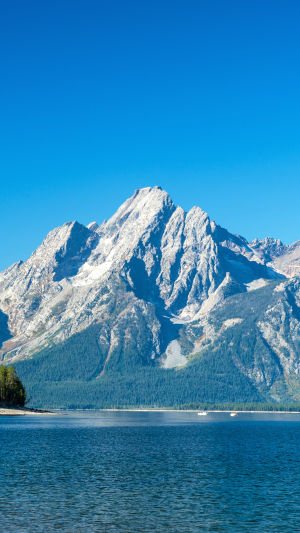Hi Lykkers! Towering over the serene waters of Jackson Lake, Mount Moran stands as one of the most striking features of Wyoming’s Teton Range.
With its rugged beauty, glaciers, and distinctive appearance, this mountain attracts adventurers and nature lovers alike. Let’s explore the history, geology, and allure of this magnificent peak.
<h3>Geological Significance of Mount Moran</h3>
Mount Moran is not just a scenic peak—it is also of great geological importance. The mountain is composed primarily of ancient Precambrian rock, making it some of the oldest rock in the Teton Range. Its towering walls display layers of granite and metamorphic gneiss, offering a window into the Earth’s distant past.
One of Mount Moran’s most distinctive features is the Skillet Glacier, which clings to the mountain’s eastern face. This glacier, named for its skillet-like shape, has long been a destination for adventurous climbers, especially those looking to summit via the famous Skillet Glacier Route. Though small in comparison to other glaciers, the Skillet Glacier remains an iconic symbol of Mount Moran’s rugged beauty.
<h3>Activities Around Mount Moran</h3>
1. <b>Hiking and Exploring Jackson Lake</b>: While climbing Mount Moran is reserved for experienced mountaineers, there are numerous hiking trails around Jackson Lake that provide stunning views of the mountain. The trails offer different levels of difficulty, making them accessible to hikers of all skill levels. Popular trails like Hermitage Point provide scenic views of Mount Moran across the lake, perfect for photographers.
2. <b>Kayaking and Canoeing on Jackson Lake</b>: For those looking for a different perspective, kayaking or canoeing on Jackson Lake offers an unbeatable view of Mount Moran’s reflection on the water. The calm, clear waters create a mirror-like surface, with the towering peak framed by the surrounding wilderness.
3. <b>Wildlife Viewing and Photography</b>: The area around Mount Moran is a paradise for wildlife enthusiasts. Birdwatchers can catch glimpses of bald eagles soaring above, while those with a keen eye might spot elk or even bears in the surrounding forests. Photographers will find endless opportunities to capture the mountain’s beauty, particularly during sunrise or sunset when the light casts dramatic shadows on the peak.
4. <b>Camping in Grand Teton National Park</b>: For a more immersive experience, camping in the national park provides an opportunity to sleep under the stars with Mount Moran as your backdrop. The park offers several campgrounds, each with its own unique view of the Teton Range. Waking up to the sight of the sun rising over Mount Moran is a truly unforgettable experience.
<h3>Tips and Costs for Visiting Mount Moran</h3>
1. <b>Best Time to Visit</b>: The ideal time to visit Mount Moran and the surrounding area is from late spring to early fall. The summer months offer the best weather for hiking, climbing, and water activities on Jackson Lake. However, for those looking to experience the solitude and beauty of the Teton Range, visiting in the shoulder seasons (late spring or early fall) offers fewer crowds.
2. <b>Cost</b>: Entry to Grand Teton National Park costs around <b>$35</b> <b>USD</b> per vehicle for a seven-day pass, which includes access to all areas of the park, including Mount Moran and Jackson Lake. For climbers and backpackers, additional permits may be required for overnight stays in the backcountry.
Mount Moran offers a unique and unforgettable experience in one of America’s most beloved national parks.





